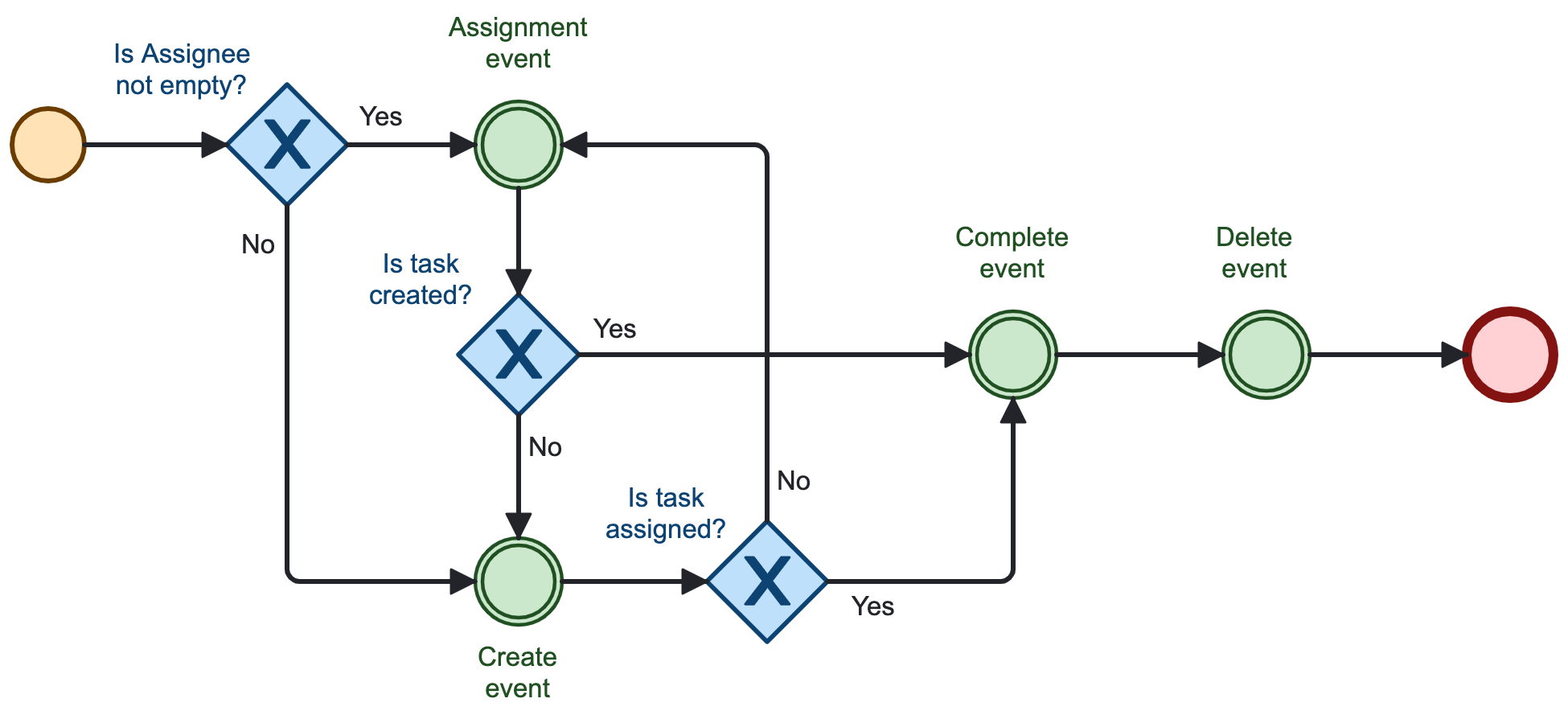Task Listeners
User Task Lifecycle

It looks a little bit complicated, but the lifecycle of the user task isn’t straightforward.
When the execution arrives at the user task, the BPM engine first tries to define a real performer (assignee) as we have seen at the previous slide.
If the engine is a success in defining an assignee, an assignment event occurs.
This happens BEFORE create event. It seems counterintuitive, but it is pragmatic: if we put assignment event AFTER create, we’ll get one extra database operation.
Because create event means that task object is persisted.
Nevertheless, until the user task is assigned to somebody, nobody can complete it. You can reassign the task as nay times you want. Programmatically, you even can set the assignee equals null.
After all, the task must be completed by the user or programmatically. In both cases, complete event occurs.
Then the engine is to move a task object from runtime data (act_ru_task table) to historic data (act_hi_taskinst table). Just before this, delete event occurs.
User task events:
| Create |
It occurs when the task has been created and all task properties are set. |
| Assignment |
It occurs when the task is assigned to somebody. Note: when process execution arrives in a userTask, first an assignment event will be fired, before the create event is fired. This might seem an unnatural order, but the reason is pragmatic: when receiving the create event, we usually want to inspect all properties of the task including the assignee. |
| Complete |
It occurs when the task is completed and just before the task is deleted from the runtime data. |
| Delete |
It occurs just before the task is going to be deleted. Notice that it will also be executed when the task is normally finished via |
By the way, you can use BPMN to draw state diagrams instead of UML. Here is an example — intermediate events are used as states, the sequence flows as transitions. Of course, it doesn’t cover all UML capabilities, but for illustration purposes it is OK.
